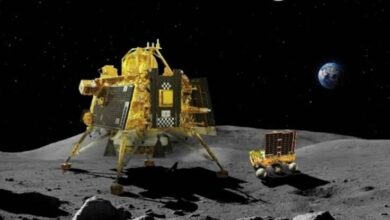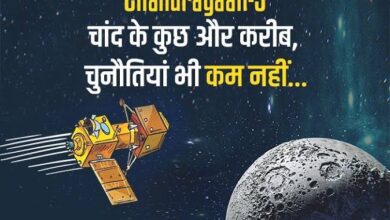The Vande Bharat Express on the Bilaspur-Nagpur section ushers in a new era of low-cost semi-high-speed rail travel.
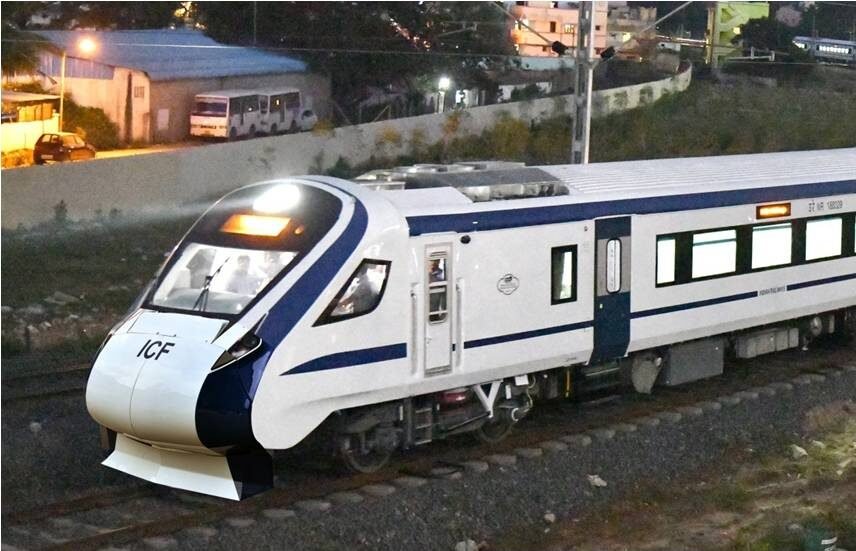
Dispatch News.
The Vande Bharat Express, which will run on the Bilaspur-Nagpur section, will provide passengers with an aircraft-like travelling experience and advanced state-of-the-art safety features such as Kavach technology, an indigenously developed train collision avoidance system. The Vande Bharat Express ushered in a new era of low-cost semi-high-speed rail travel. Its aerodynamic design allows it to reach a top speed of 160 kilometres per hour (KMPH) in 140 seconds. Rapid acceleration and deceleration are facilitated by alternate coaches sourcing power, resulting in a 40-45% reduction in travel time compared to existing express trains.
The ergonomic design and passenger amenities, such as bio-vacuum toilets, reclining seats, onboard wi-fi, digital entertainment and display systems, noise-free and dust-free cabins, etc., make travel comfortable. Furthermore, with improved fire and flood protection mechanisms, this train competes in terms of safety in your living room. 75 Vande Bharat trains, produced by ICF Chennai, will crisscross the country in August 2023.
Before we go any further, the commercial performance of these trains is irrelevant because two of them have already begun operations in 2019. Vande Bharat has been a golden goose for Indian Railways, according to the data. On the existing routes, occupancy hovers around 100%, with an unprecedented annual revenue realisation of Rs. 92.3 crores on the Delhi-Varanasi route. A group of migrant workers in Varanasi even told the Hon’ble PM that they chose to take this train to save time and recoup the extra costs by encashing the hours saved.
However, Indian Railways must overcome teething problems to spread Vande Bharat trains across the network while maintaining high service standards. Due to low design capacity, less than 1% of the entire track network supports speeds above 120-130 KMPH, complicating any planned speed increase. Second, meeting the target of 400 Vande Bharat in three years necessitates a significant increase in production capacity and labour. Third occasional passenger complaints about food quality and personal safety may detract from the overall experience. Improving travel comfort and unlocking economic benefits through Vande Bharat requires a comprehensive action plan.
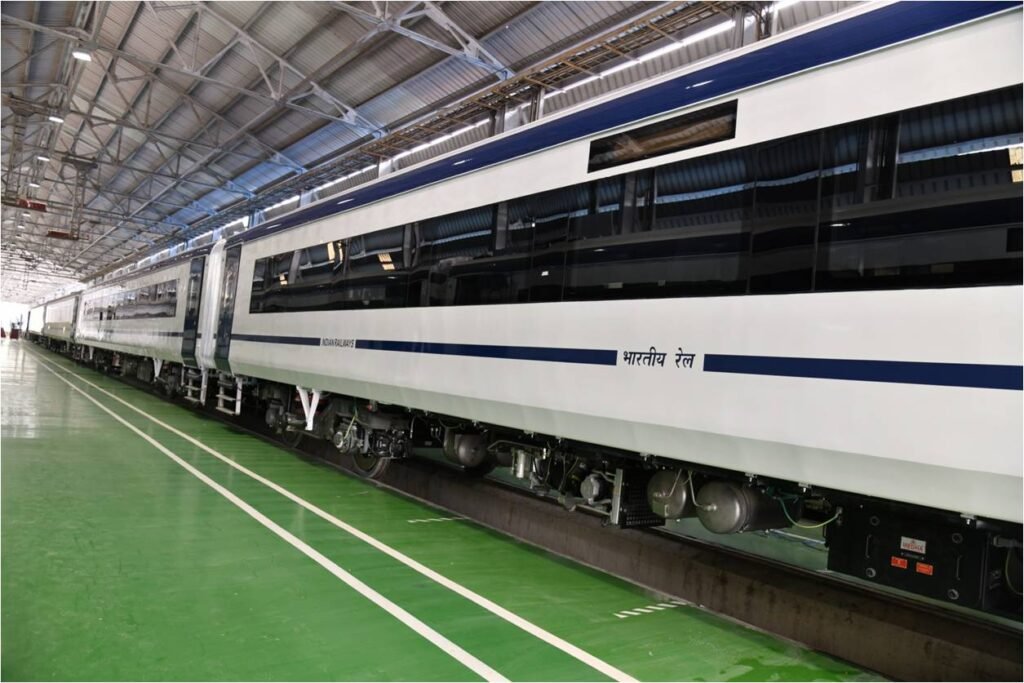
The train has bogies with fully suspended traction motors for an operational speed of 160 KMPH and an advanced state-of-the-art suspension system that ensures smooth and safe conveyance and enhanced comfort. All classes have reclining seats, except the executive coaches, which have 180-degree rotating seats.
Every coach has 32-inch screens providing Passenger Information and Infotainment. There are also Divyang-friendly restrooms and seat handles with seat numbers in Braille letters.
Safety features of Vande Bharat Express:
Outside the coach, there are four platform-side cameras, including rear-view cameras, on this train. In addition, the train intends to reduce Indian Railways’ carbon footprint by eliminating power cars and saving approximately 30% of electricity with an advanced regenerative braking system.
In an emergency, the locomotive pilot and train guard can easily communicate with one another and passengers.
The other safety feature is automatic fire sensors and CCTV cameras.
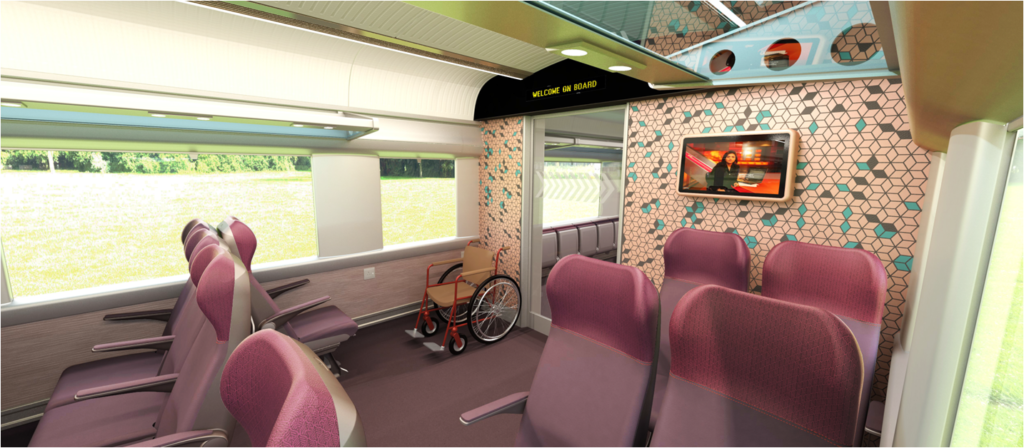
Other Special features:
It includes on-demand content with a wi-fi facility, three-hour battery backup and GPS systems to make travelling safer and more comfortable.
It also has a photo-catalytic ultraviolet air purification system in the roof-mounted air-conditioning unit for air purification. The Central Scientific Instruments Organization (CSIO), Chandigarh, recommended the system, designed and installed on both ends of a roof-mounted air-conditioning unit to filter and clean the air coming through fresh air and return air.
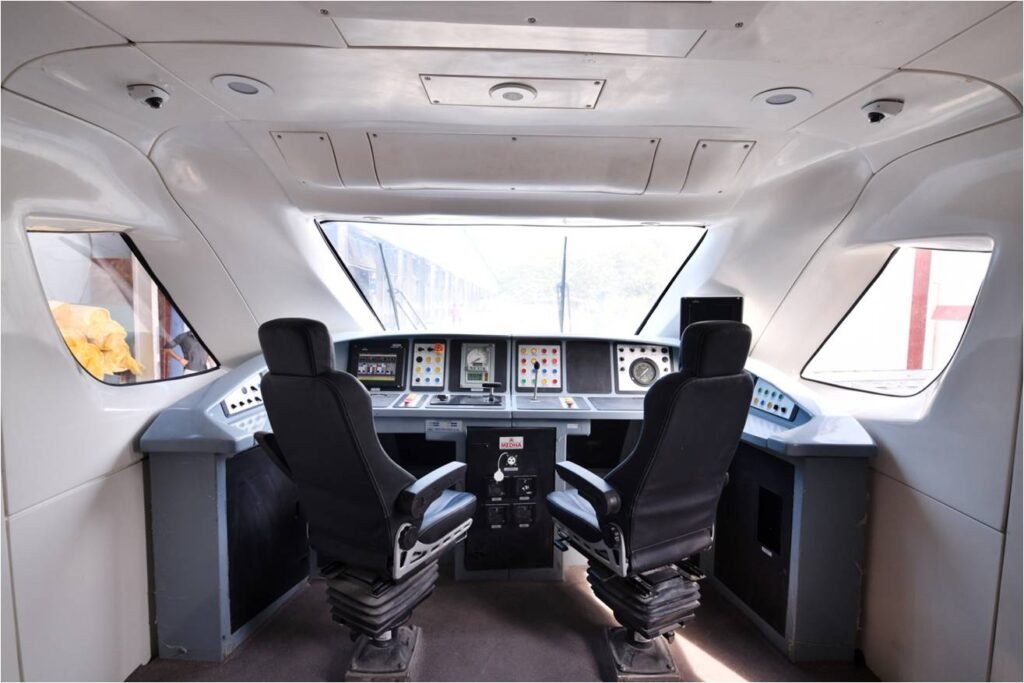
Travelling on the new trains would be more comfortable than on the existing two trains as the new trains’ coaches will be lighter than those of older trains.

The train can operate even with two feet of floodwater on the tracks. The passengers would feel extra comfortable even at high speeds due to their lighter weight.
The pilot controls the automatic gates. The windows are large, and there is more room for luggage. Except for a few minor components, the trains are “Made in India.” Most importantly, the design and IPR (Intellectual Property Rights) remain with Indian Railways.




